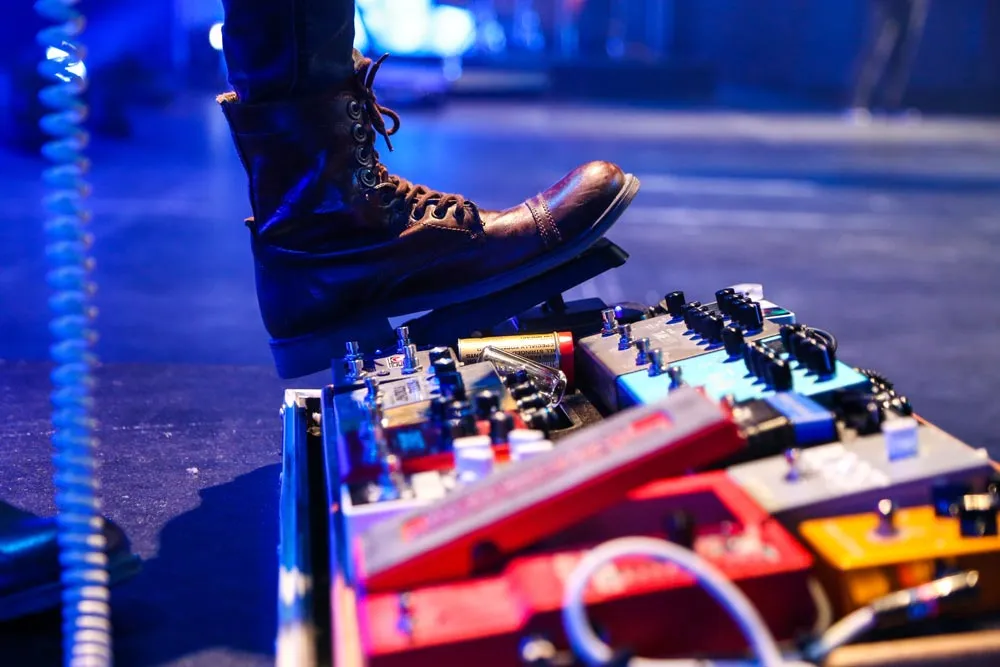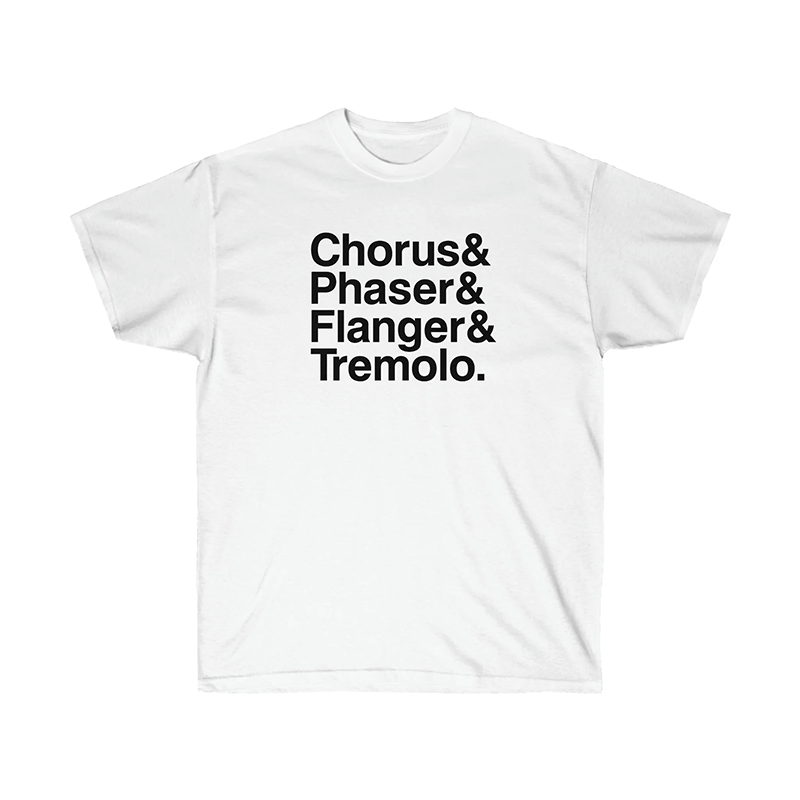(This article comes from our friends at GuitarTricks.com – check out their site for tons of guitar-related tips and tricks!!)
I Have Too Many Pedals, How To Pare Down
By Shawn Leonhardt for Guitar Tricks and 30 Day Singer, the original platform for online guitar lessons.
There comes a point where every guitar player realizes they have too many effects pedals! It’s true, it happens, but you don’t need to get rid of any, you just need to cut back on how many are in that final signal chain on the pedalboard.
Starting out as a beginner guitar player we amass effects pedals like crazy. Only to find out it’s pretty difficult to lug and plug all these pedals in on every gig. Here are some tips for those that have too many guitar pedals and need to pare down.
What basics are needed to survive a gig?
We really don’t need to worry about cutting back at home as it is a lot easier to switch pedals when playing and experimenting. During practice while learning how to play guitar it is important to pay attention to what we need and use the most. Everyone has different genres they play so each guitarist will have a set of pedals that are truly essential to playing a gig.
The standard pedals that most people have will be some or all the following:
- Time based effects like delay, echo, reverb, and anything that alters the timing of the signal.
- Modulation effects that mix the signal to get chorus, delay, phaser, flanger, tremolo, and more.
- Pitch changing effects that alter and double frequencies like harmonizers, wahs, and octave pedals
- Overdrive and boosting pedals allow us to clip the signal to get distortion and even the pedals that create fuzz.
- Dynamics and filter pedals that let you alter amplitudes and frequencies like volume, EQ, noise gates, and compressors.
- Tuners, Loopers, and even multi-effects units that handle more than one signal change. Digital effects will usually be smaller and more compact than those that have analog components.
The smallest of pedal boards would have a bare minimum of a guitar tuner and a few other pedals. Mostly distortion, overdrive, and time-based effects daisy chained together. That would be enough for most blues, hard rock, and country styles. Once you have a slightly larger pedalboard you can add more signal clipping and modulation like chorus, flangers or other sound effects.
If possible a small to medium pedalboard is great as it allows you to get the basics all in there, that way you can have a versatile sound. But as you have seen, as we increase in size we need to get an extra isolated power source and have more connections! So when it gets to the point where we just have too much going on it is time to pare down to the smallest board possible.
What pedals can be removed from your board?
Right away anything that is not used enough may need to go, depending on how important it is to the gig. If some of the effects above are doubled up, you may not need more so try removing one. If you have a pedal that handles more than one effect that will likely be a better pedal to keep. It will take some trial and error but if you’re playing a large effects rig there is likely some redundancy.
Some players suggest to off board certain pedals that are not used as much, but this can be problematic. If they are effects that are essential to the gig then it’s best not to take any chances with playing flow or other issues. If you want to really trim your guitar pedals down, then putting them off the board is usually not helpful. However, you can get a smaller pedal board that has space underneath for power supplies and such.
It is also important to take a step back and look at the music and genre you play. If your goal is for ultimate sound exploration then a small pedalboard may not be for you! But if you are gigging and playing specific covers of easy guitar songs, or a particular genre, look up past players and see what they used. Check and see the bare minimum of guitar effects that others play on their live gigs.
You can also explore the input and output power of each effects pedal if you are trying to dial in the most perfect board ever. Pay attention to whether your pedal is high or low in impedance and use them properly. You can simply experiment with which fewer pedals work best or you can take it to a musical and electronic extreme, it is up to you!
Moving from a large pedalboard to a small pedalboard Remember it’s not just the amount of pedals you have but the spacing and layout as well, it helps to use low-profile cables and maybe risers to minimize any wasted space. If you happen to have top jack pedals that will save a lot of room. Look at how the pedal is getting power and how is it going to be connected? This will be one of your first thoughts when moving from a large to small pedalboard.
The term smaller can be misleading as you can always try using a tiered system with different levels. Depending on the pedals used this could give you a lot more room even though the board still takes up a smaller space. If you absolutely cannot sacrifice certain guitar pedals because it will impact your final sound, then it becomes a matter of finding the smallest board setup that will fit the most.
Practice these new setups when you move from a large to small pedalboard, see if you can still achieve the same tones as before. If so that is great, otherwise if you are using multi-effects units you will have to see what different settings can get you to the original sound. There is a good chance you didn’t need all the guitar pedals you had before so often cutting back is not going to have a drastic effect.
If you want to pare down on your guitar pedals and have a smaller pedalboard you will have to look at the essentials for what you play. Check out what other artists in your genre use as the basics for a live gig and experiment with different setups of just a handful of pedals. If dialed in correctly you would be surprised how versatile you can play with a small chain of effects. It’s all about maximizing space and sticking to the guitar pedal necessities.
Shawn Leonhardt is a writer for Guitar Tricks, a platform for online guitar lessons with over 4 million subscribers.
________________________
GET EXCLUSIVE UPDATES, CONTEST INFO, SEE OUR LATEST DEMO VIDEOS AND MORE:
















